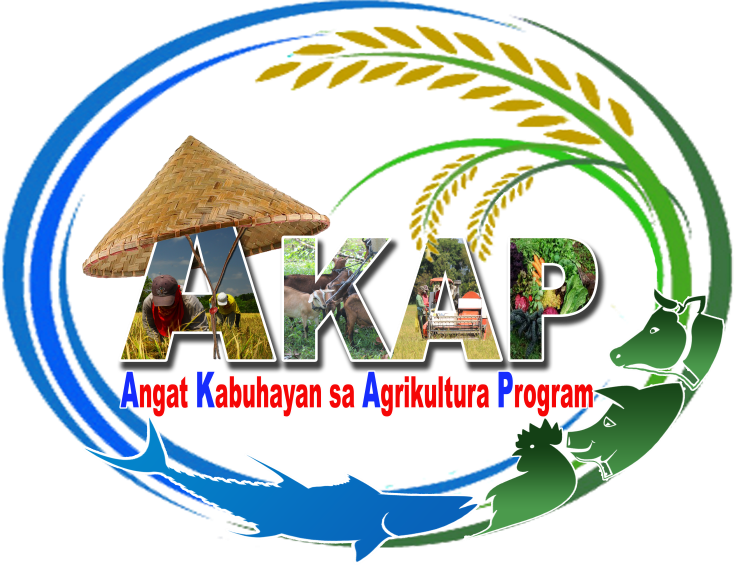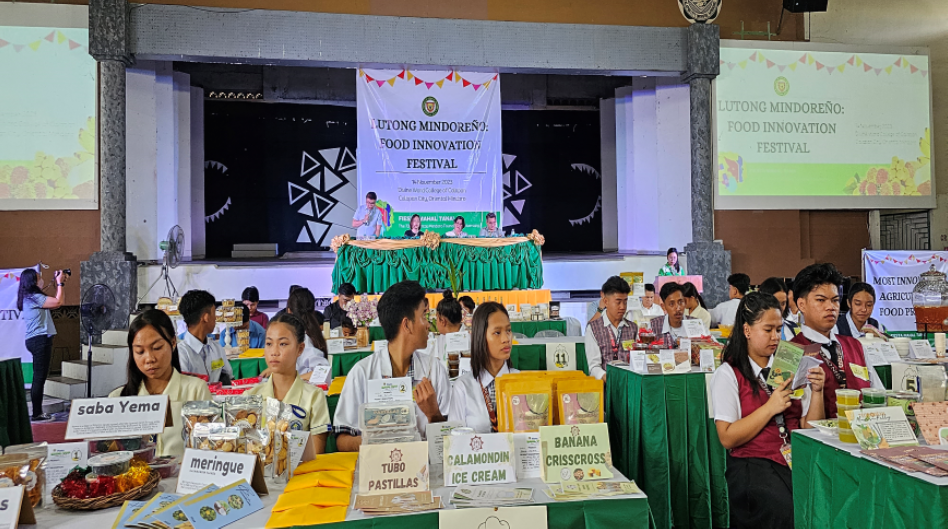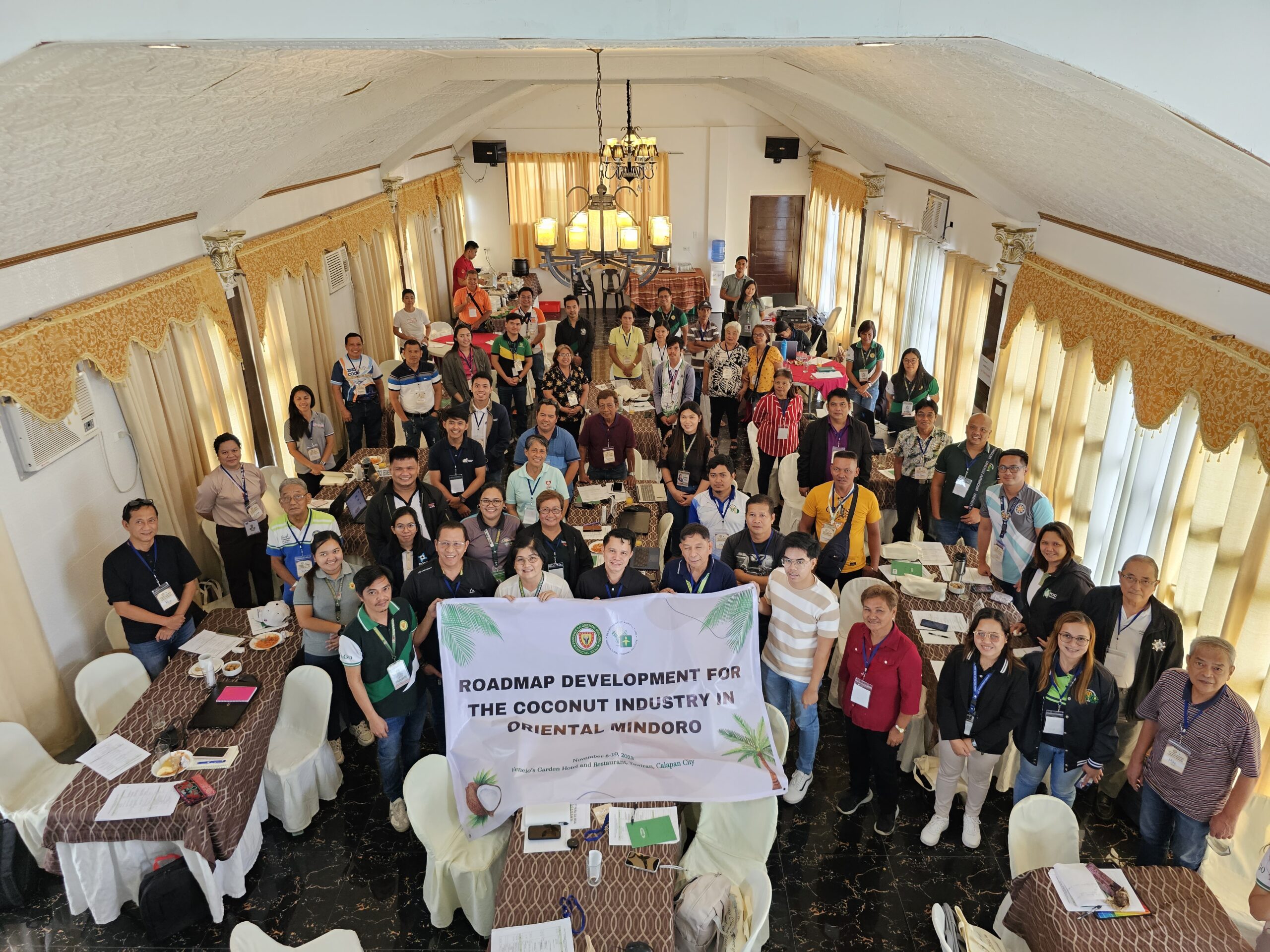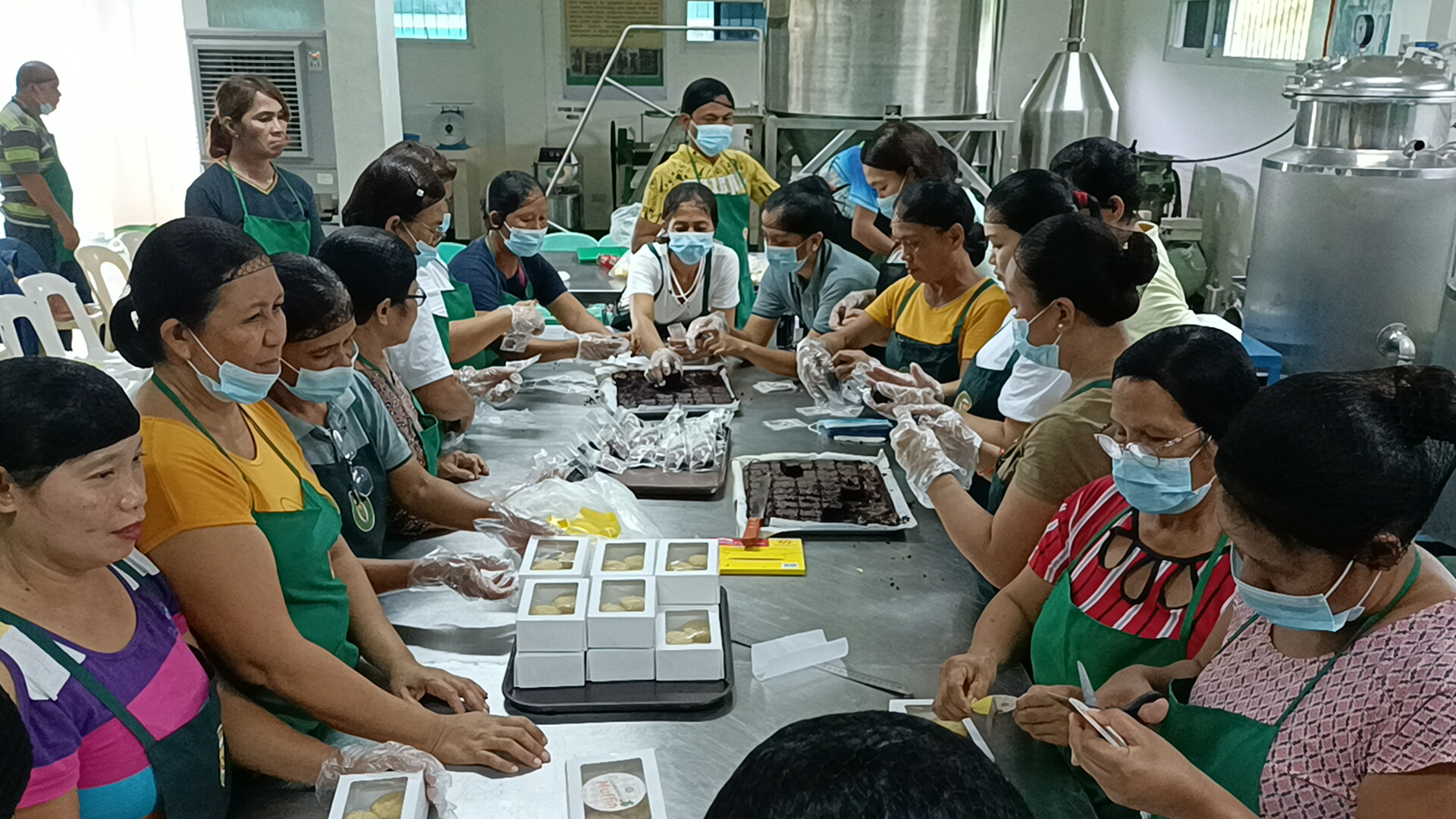AGRI-PROFILE: cALAPAN CITY, ORIENTAL MINDORO
Calapan, Oriental Mindoro
The City Government of Calapan is operating a two (2) hectare field Calapan City Agricultural Demonstration Center. It features organic vegetable gardening, rice field, vermicomposting and organic fertilizer production, warehouse for mushroom production, training center and Organic Trading Center, among others. To support the manpower and sustain productivity, the present administration is bent on maximizing the City’s agricultural potentials through programs as the Angat Kabuhayan sa Agrikultura Program (AKAP) benefitting farmers primarily and assisting farmers’ groups/associations. It includes providing mechanized harvester and planter, multi-purpose drying pavements, and 4-wheeled tractors, among others.

AkAP or Angat-kabuhayan sa Agrikultura Program is the name of the agricultural development program of the City Government of Calapan. Twelve (12) projects comprise AkAP, to wit:
1. Rice Seed Subsidy
2. Rice Seed Production
3. Integrated Focus Food Production
4. Urban Gardening
5. Organic Fertilizer Production
6. Livestock Production
7. Fisheries Development
8. Farm Mechanization
9. Post-harvest Facilities
10. Communal and Small Irrigation
11. Farm to Market Road
12. Marketing Assistance and Promotion
As the business, trade and commerce fluctuate in the now fast-urbanizing Calapan City, agriculture still remains a major source of income, especially to the large portion of the populace that depends on the tilled land for living. Thirty four (34) out of the sixty two (62) barangays of Calapan City are still classified rural, with constituents basically engaged in farming and related soil-based livelihood.
Calapan plays a major role in the Philippine economy as one of the major food suppliers in the country. The city is also a major exporter of rice supplying to Metro Manila and major parts of Luzon making it both an agriculturally-progressive and urbanized city. The five major crops are rice, citrus, banana, rambutan and lanzones.
To support the manpower and sustain productivity, the present administration is bent on maximizing the City’s agricultural potentials through programs as the Angat Kabuhayan sa Agrikultura Program (AKAP) benefitting farmers primarily and assisting farmers’ groups/associations like Calapan Farmer’s Mulit-purpose Cooperative (CALFAMCO). Modernisation of farming facilities and introduction of hybrid seeds likewise are practically the best measure to obtain high yields in less time and minimal labor.
But while the City has earned the reputation of being a top rice/palay producer in the Region and Oriental Mindoro, as “Food Basket” yet there are special concerns however with regards to the high prices of rice grains and of other agricultural products thus the Calapeños, primarily, who are in the “main banqueting table” do not enjoy the feast they should be accorded.
A very imminent danger to the City’s main agricultural lands and in general is the continuous operation of the present water concessionaire tapping the ground water to which the traditional farms have long depended for irrigation, thereby posing grave threat of saline intrusion which is destructive to crop production and to the total soil structure.
Environmental Characteristics
Location And Land Area
The city of Calapan is located at the northeastern part of Mindoro Island. Its geographical coordinates are 13-deg. 12.6-min. and 13-deg. 27-min. north latitude and 121-deg. 17-min. east longitude. It is 28 nautical miles from the nearest point of Batangas Province and is about 45 km. south of Batangas City and 130 km. south of Manila. Calapan Bay bounds the city on the north and northeast, on the south and southeast by the municipality of Naujan and on the west by the municipality of Baco. It has an area of approximately 185.99 sq. km. including its three (3) Baco and two (2) Silonay islets. Administratively, the city has been subdivided into 62 barangays: 17 of which are classified as urban and 45 as rural.
Physical Geography
The city is situated on the vast northeastern floodplain of Oriental Mindoro. The overall land character is that of a wide plain havingmeandering rivers interspersed with wetlands at the seacoast periphery. The pervasive flat terrain is interrupted only by the elongated Bulusan Hill (highest elevation about 187 meters above sea level) at the city’s northeastern portion. Physiographic information is largely based on the outputs of the Soils/Land Resources Evaluation Project (LREP) for the Province of Oriental Mindoro (The Physical Environment and Agro-Socio-Economics) undertaken by the Department of Agriculture – Bureau of Soils and Water Management. This is the city’s area as measured from cadastral data using Geographic Information System (GIS) – based techniques and is being used in this document for planning purposes. On the other hand, the Land Management Bureau places the area at 250.06 sq.km.; the National Statistics Office has a figure of 265.20 sq.km.; and previous data from the Office of the City Assessor shows the land area of the city to be 217.30 sq.km. This was supplemented by ground truthing conducted by the Consultant during the period of September to October 1998. Physiographic regions are defined based on LREP classification.(Situational Analysis PLAN ENVIRONMENT, U.P. PLANNING AND DEVELOPMENT RESEARCH FOUNDATION, INC. 3-2)
Rice Area Per Barangay
| DRY SEASON 2016-17 | ||||||
| Barangay(s) | IRRIGATED | RAINFED | TOTAL | |||
| AREA | Farmers | AREA | Farmers | AREA | Farmers | |
| Balingayan | 341 | 137 | 0 | 341 | 137 | |
| Balite | 39 | 29 | 0 | 39 | 29 | |
| Baruyan | 440 | 226 | 440 | 226 | ||
| Batino | 426.5 | 209 | 426.5 | 209 | ||
| Bayanan 1 | 130 | 44 | 0 | 130 | 44 | |
| Bayanan 2 | 291.5 | 107 | 0 | 291.5 | 107 | |
| Biga | 508.65 | 215 | 0 | 508.65 | 215 | |
| Bucayao | 100 | -63 | 90 | 190 | 63 | |
| Buhuan | 129 | -96 | 150 | 279 | 96 | |
| Bulusan | 5 | -12 | 8.5 | 13.5 | 12 | |
| Camansihan | 413 | -200 | 7 | -5 | 420 | 195 |
| Camilmil | 6 | 1 | 6 | 1 | ||
| Canubing 1 | 192.5 | 110 | 0 | 192.5 | 110 | |
| Canubing 2 | 271 | 157 | 271 | 157 | ||
| Comunal | 251.5 | 112 | 0 | 251.5 | 112 | |
| Guinobatan | 50 | -46 | 37 | 87 | 46 | |
| Gulod | 348.5 | 122 | 0 | 348.5 | 122 | |
| Gutad | 86.5 | 56 | 60.5 | 34 | 147 | 90 |
| Mahal na Pangalan | 7 | 3 | 0 | 7 | 3 | |
| Malad | 312 | 109 | 0 | 312 | 109 | |
| Malamig | 152 | 73 | 0 | 152 | 73 | |
| Managpi | 654 | 272 | 0 | 654 | 272 | |
| Masipit | 65 | -61 | 27.25 | 92.25 | 61 | |
| Nag-iba 1 | 111.25 | -49 | 7.5 | 118.75 | 49 | |
| Nag-iba 2 | 106.75 | 52 | 65 | 27 | 171.75 | 79 |
| Pachoca | 25 | 22 | 0 | 25 | 22 | |
| Palhi | 38 | -59 | 62 | 100 | 59 | |
| Panggalaan | 100 | -63 | 90 | 190 | 63 | |
| Parang | 15 | 12 | 5 | 20 | 12 | |
| Patas | 86 | 60 | 0 | 86 | 60 | |
| Personas | 133 | -78 | 21 | 154 | 78 | |
| Putingtubig | 509.55 | 186 | 0 | 509.55 | 186 | |
| Sapul | 248 | -130 | 20 | 268 | 130 | |
| Sta. Cruz | 279.75 | -93 | 279.75 | 93 | ||
| Sta. Isabel | 390 | 145 | 0 | 390 | 145 | |
| Sta. Rita | 119 | 76 | 0 | 119 | 76 | |
| Tawagan | 37 | -45 | 32 | 69 | 45 | |
| Tawiran | 20 | -20 | 5 | 25 | 20 | |
| TOTAL | 7437.95 | 3550 | 687.75 | 56 | 8125.7 | 3606 |
Source: City Agriculture Services Department of Calapan City, Oriental Mindoro
Municipalities

Food Innovation Festival 2023: Lutong Mindoreño

PAGO, ATI pursues Roadmap for Oriental Mindoro Priority Commodities

PAGO, MFI Raise MPA Awareness Among Youth

PAGO Empowers Farmers through Innovative Processing Technique
Subscribe to our AgriInfoHub newsletter and receive the latest updates, expert insights, and valuable tips to cultivate success on your farm.
